October 7, 2024 · 10 min read
Streamlining Project Communication: Why Meeting Management Matters

Shaimaa Badawi

In project management, effective communication is often the deciding factor between smooth project execution and costly setbacks. When team members and stakeholders are aligned and informed, projects flow seamlessly, decisions are made efficiently, and challenges are resolved swiftly. This article delves into the critical role of meeting management in streamlining project communication, from setting clear agendas to ensuring accountability.
What role does effective communication play in successful project management?
Effective communication is foundational to successful project management because it aligns everyone involved with a shared understanding of goals, expectations, and responsibilities. In project environments, communication serves as the connective tissue that holds various aspects of the project together—from timelines and task assignments to risk management and stakeholder engagement.
Clear communication minimizes misunderstandings and streamlines decision-making, allowing teams to adapt quickly to changes and maintain momentum. When communication is structured and transparent, it creates a culture of trust, where team members feel informed and empowered to collaborate effectively. This environment encourages proactive problem-solving, ensuring that potential issues are identified early and addressed before they can impact the project.
Moreover, effective communication supports stakeholder alignment, keeping clients and other parties in the loop with consistent updates that build confidence and manage expectations. By creating a framework for ongoing dialogue, project managers can foster a supportive atmosphere where accountability and engagement drive the project forward.
What are the common communication barriers in project teams, and how can they impact project outcomes?
Common communication barriers in project teams can significantly derail project outcomes by introducing misunderstandings, misalignment, and inefficiencies. Here’s a look at some key barriers and their impacts:
1. Information overload and fragmentation
With multiple communication channels like emails, messaging apps, and project platforms, team members can easily feel overwhelmed. When information is scattered, critical updates may be missed, leading to delays or duplicated efforts that waste time and resources.
2. Cultural and language differences
For teams working across different regions or languages, cultural nuances and language barriers can impact the clarity of messages. Misinterpretations or unintentional miscommunications can create conflicts, lower morale, and affect teamwork, particularly in diverse or remote settings.
3. Lack of clarity and ambiguity
When project goals, roles, or expectations aren’t clearly communicated, team members may become uncertain about their responsibilities or objectives. This often leads to misaligned efforts, errors, or incomplete tasks, which can hinder overall progress and create a need for rework.
4. Time zone differences and remote work challenges
For global or remote teams, coordinating across time zones can delay responses and reduce the effectiveness of real-time collaboration. Important discussions may be postponed or fragmented, and team members may miss out on valuable insights when they aren’t present in critical meetings.
5. Over-reliance on certain communication channels
While digital tools facilitate quick exchanges, relying solely on text-based communication like emails or chat messages can strip away context or emotional tone. This can lead to misunderstandings and missed opportunities for deeper collaboration, as well as create a sense of detachment among remote team members.
6. Impact on project outcomes
These barriers can lead to delayed timelines, increased costs, and reduced project quality. Miscommunication at any stage may necessitate corrections, rework, or additional meetings to clarify issues, reducing efficiency and team morale. In high-stakes projects, even minor miscommunications can lead to major setbacks, affecting stakeholder satisfaction and the project’s long-term success.
How can structured meetings improve communication flow in project environments?
Structured meetings play a vital role in enhancing communication flow within project environments by setting a clear framework for information sharing, accountability, and decision-making. Here’s how:
1. Establishes clear agendas and objectives
Structured meetings start with defined agendas and specific goals, ensuring that every participant knows the purpose and focus. This reduces ambiguity, keeps discussions on track, and makes it easier for team members to prepare relevant information and updates, fostering a productive exchange.
2. Encourages consistent updates and follow-through
Regular, structured meetings create predictable opportunities to discuss project progress, address challenges, and adjust plans as necessary. This consistency builds trust among team members, as everyone knows they will have a forum to voice concerns, seek guidance, or provide updates.
3. Promotes active engagement and accountability
When meetings are organized with roles assigned—such as a timekeeper, facilitator, or note-taker—team members feel a greater sense of responsibility to contribute meaningfully. Structured meetings also typically include follow-up actions with assigned owners, ensuring that all decisions are acted upon and accountability is maintained.
4. Supports real-time problem-solving
Structured meetings offer a space to address issues collaboratively in real-time, allowing team members to bring up concerns, brainstorm solutions, and make adjustments without delay. This proactive approach prevents minor issues from escalating and keeps the project on track.
5. Enhances documentation and knowledge sharing
With agendas and minutes, structured meetings provide a formal record of what was discussed, decided, and assigned. This documentation ensures that all team members, including those unable to attend, have access to the same information, making it easier to stay aligned and follow through on commitments.
6. Fosters stakeholder alignment and transparency
For projects involving multiple stakeholders, structured meetings create a platform for transparent communication and regular updates. This helps manage expectations, keeps everyone informed on project milestones, and maintains alignment between internal teams and external stakeholders.
How does streamlined communication support stakeholder alignment in projects?
Streamlined communication is essential for aligning stakeholders in projects, as it ensures that all parties have a shared understanding of objectives, progress, and expectations. Here’s how effective communication fosters stakeholder alignment:
1. Provides consistent and relevant updates
Streamlined communication establishes regular channels for updates, so stakeholders receive timely, relevant information without being overwhelmed. By focusing on the most critical project insights—like milestones reached, challenges encountered, and adjustments made—project managers keep stakeholders informed, aligned, and reassured.
2. Reduces misunderstandings and misalignment
When communication is clear and intentional, there’s less room for misinterpretation. Stakeholders gain clarity on project goals, their roles, and anticipated outcomes, which prevents conflicting priorities or decisions that can derail the project. This unified approach helps stakeholders work together seamlessly, even when they represent different departments or interests.
3. Facilitates prompt feedback and decision-making
With streamlined communication, feedback loops are short and efficient, allowing stakeholders to provide input quickly and resolve issues as they arise. This encourages faster decision-making, as stakeholders are kept in sync with project developments and can adjust their expectations or resources accordingly.
4. Builds trust and transparency
Regular, straightforward communication builds transparency, showing stakeholders that the project team is accountable and proactive. Open communication fosters trust, making stakeholders more likely to support the project and engage constructively, even if challenges arise.
5. Encourages collaboration on strategic objectives
Streamlined communication reinforces the project’s strategic goals, reminding stakeholders of the broader purpose behind each phase. This focus on overarching objectives helps stakeholders understand how their contributions align with the project’s success, creating a sense of shared responsibility.
6. Ensures smooth handoffs and dependency management
For projects with multiple stages or interdependent tasks, streamlined communication helps coordinate handoffs and manage dependencies efficiently. Stakeholders stay aware of their timelines and responsibilities, preventing bottlenecks and ensuring that the project proceeds smoothly.
What are the measurable benefits of improved communication and alignment in project management?
Improved communication and alignment in project management lead to several measurable benefits that enhance both team performance and project outcomes. Here’s how:
- Faster project completion: Clear communication reduces delays, speeding up project timelines and allowing teams to manage more projects efficiently.
- Higher task completion: Alignment ensures accountability, leading to more tasks completed on time with fewer missed deadlines.
- Reduced costs: Effective communication minimizes errors and rework, helping projects stay within budget and maximize ROI.
- Increased stakeholder satisfaction: Regular updates keep stakeholders informed, boosting trust and satisfaction with project outcomes.
- Improved team morale: Clear communication fosters a positive work environment, driving engagement and productivity.
- Higher quality: Aligned teams meet quality standards more consistently, producing deliverables that satisfy stakeholders.
- Better risk management: Open communication helps teams address risks early, minimizing disruptions.
- Higher success rates: Projects with strong alignment and communication are more likely to meet goals and succeed.
What features in meeting management software are essential for seamless project communication?
Meeting management software can be a powerful tool for facilitating seamless communication in project environments, as it centralizes essential functions and keeps team members and stakeholders on the same page. Here are some key features that enhance communication flow:
1. Agenda setting and sharing
A robust agenda builder allows project managers to set and share meeting agendas in advance, ensuring that participants know what to expect and can prepare relevant updates or data. Structured agendas help keep meetings focused and prevent unproductive detours.
2. Real-time collaboration tools
Features such as live chat, comment threads, and virtual whiteboards allow participants to engage actively during the meeting, share insights, and collaborate on solutions. These tools are particularly valuable in remote or hybrid environments, where real-time interaction can bridge gaps and maintain team cohesion.
3. Integrated action tracking
Meeting software that enables assignment of action items with deadlines, owners, and follow-up reminders streamlines accountability and ensures that decisions lead to concrete actions. This feature helps prevent tasks from slipping through the cracks and keeps the project moving forward.
4. Document and file sharing
Centralized document sharing allows participants to access and review relevant files, reports, and meeting notes easily. Having resources at their fingertips helps participants stay informed and ensures everyone has access to the latest data and materials, avoiding version control issues.
5. Automated minutes and summaries
Automated note-taking or meeting summary features capture key points, decisions, and action items without manual effort. This functionality is essential for ensuring that all participants, including those who couldn’t attend, have an accurate record of what was discussed, enhancing alignment and follow-through.
6. Scheduling and calendar integration
Calendar integration makes scheduling seamless by coordinating availability across team members and automatically adding meetings to participants’ calendars. It also reduces scheduling conflicts and ensures that all relevant parties are available for critical discussions.
7. Video-conferencing integration
Built-in video-conferencing or integration with popular platforms (e.g., Zoom, Microsoft Teams) allows for smooth transitions between planning and face-to-face interaction. This feature is crucial for remote teams and helps maintain engagement and clarity during discussions.
8. Analytics and reporting
Analytics features provide insights into meeting patterns, attendance, and action item completion rates. This data can help project managers optimize meeting frequency and structure, making meetings more efficient and aligned with project goals.
9. Task and milestone tracking
Integration with project management tools for tracking broader project tasks and milestones allows for seamless transition between meeting discussions and actionable project work. This feature helps maintain continuity between meeting outcomes and project progress.
How can adam.ai facilitate better communication and alignment in projects?
Clear communication and alignment among team members and stakeholders are crucial for achieving successful outcomes. adam.ai provides a powerful solution for project managers looking to streamline communication, keep teams accountable, and ensure stakeholders stay informed and engaged.
Here’s how adam.ai enhances communication and alignment in project management:
- Agenda and content management: adam.ai’s structured agenda tool helps keep meetings focused and organized, allowing project managers to ensure all critical topics are addressed.
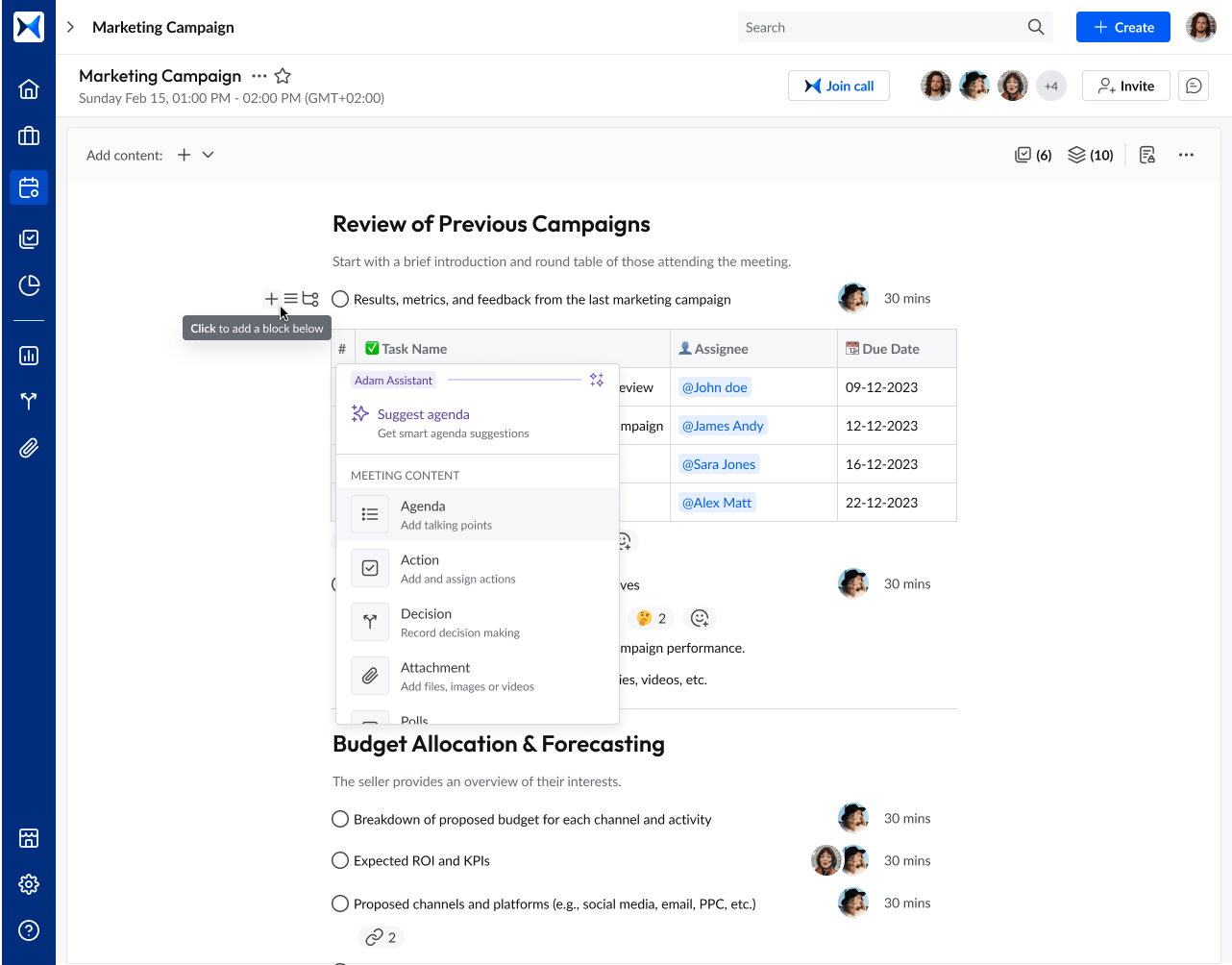
- Real-time collaboration: With features for live commenting, suggestions, and reactions, adam.ai fosters active team participation, reducing misunderstandings and promoting open communication across departments.
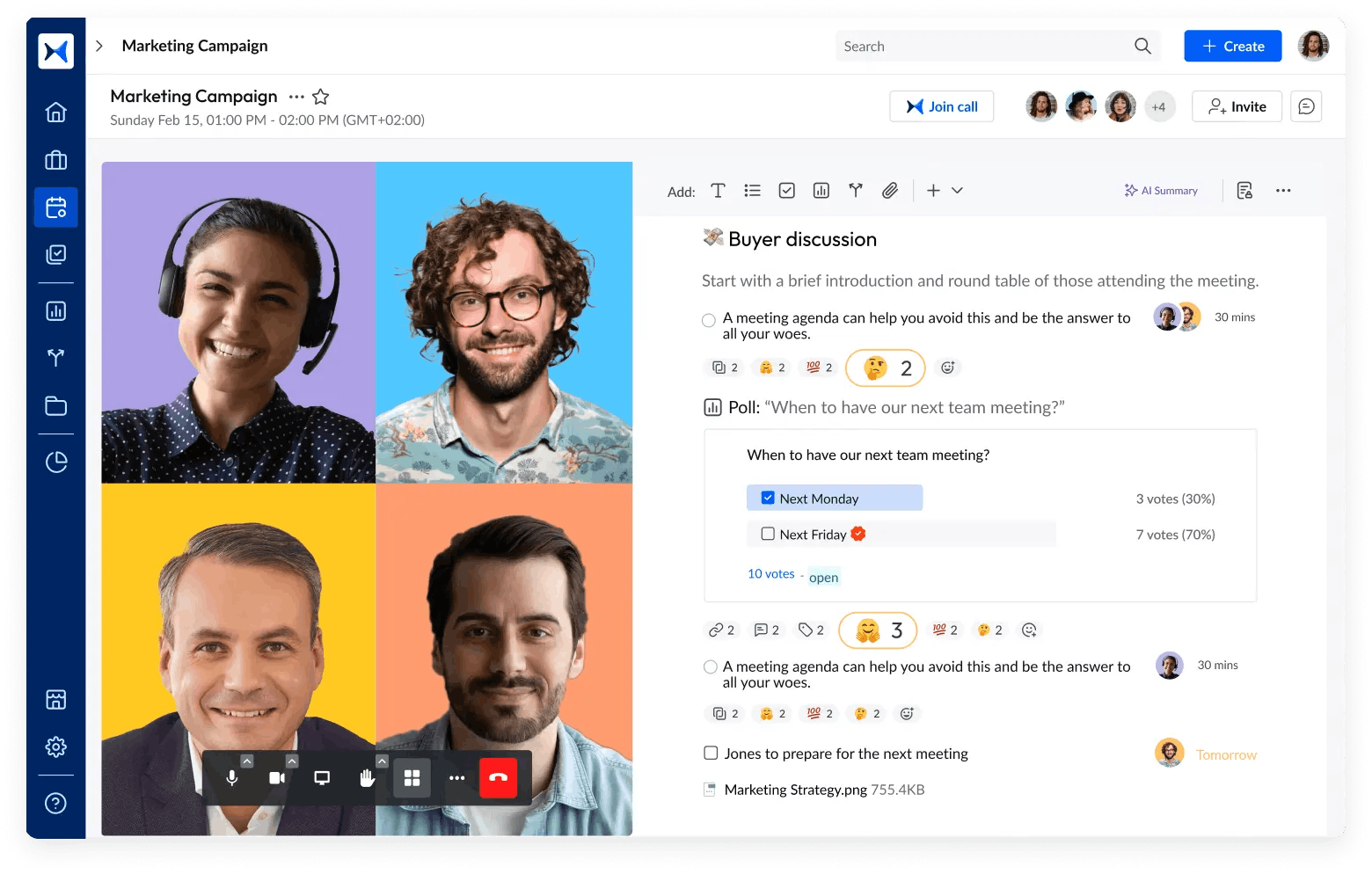
- Action item tracking: adam.ai automatically assigns and tracks tasks created during meetings, ensuring that decisions lead to concrete actions.
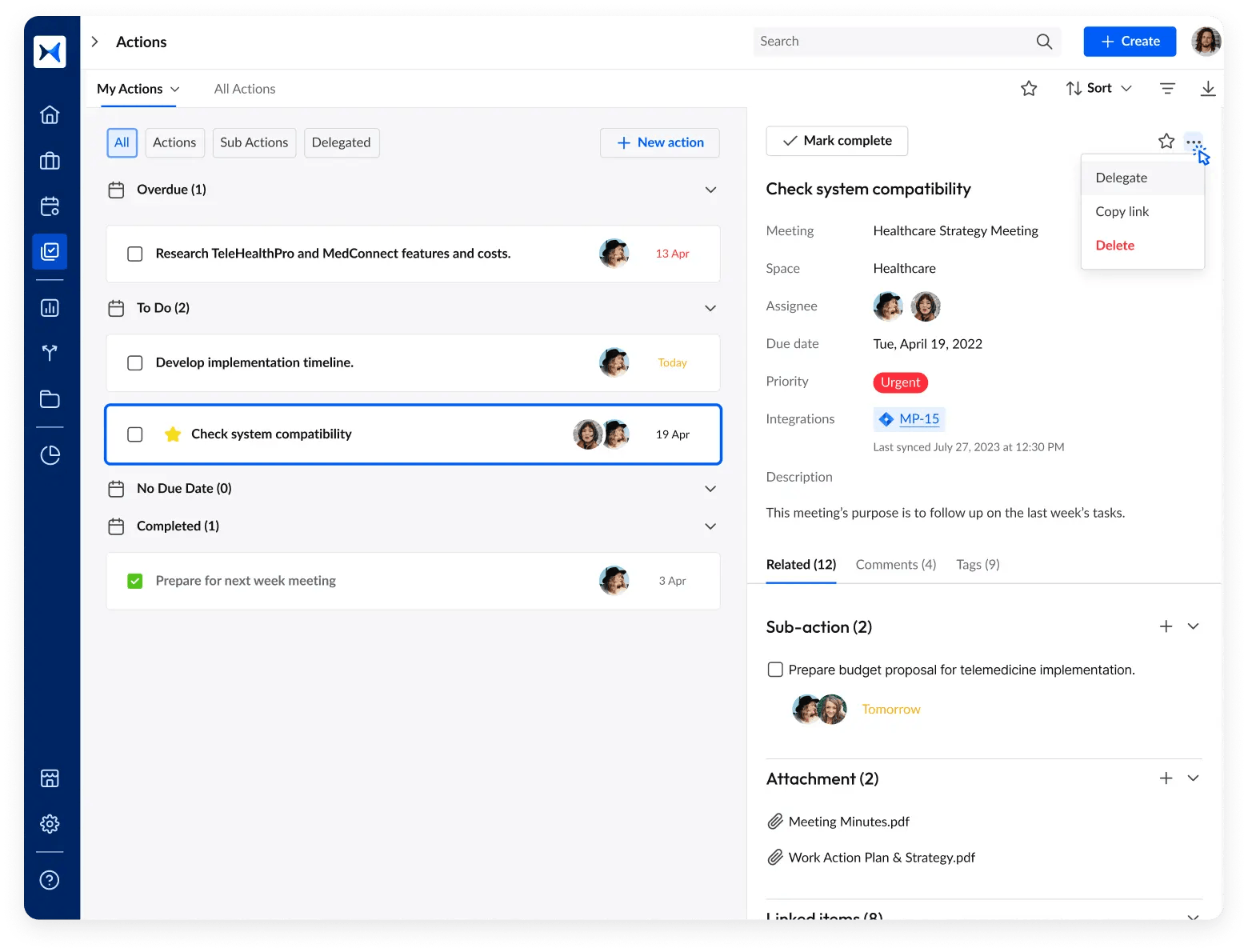
- Automated meeting minutes: Key decisions and action items are captured automatically, with minutes generated for easy sharing and reference.
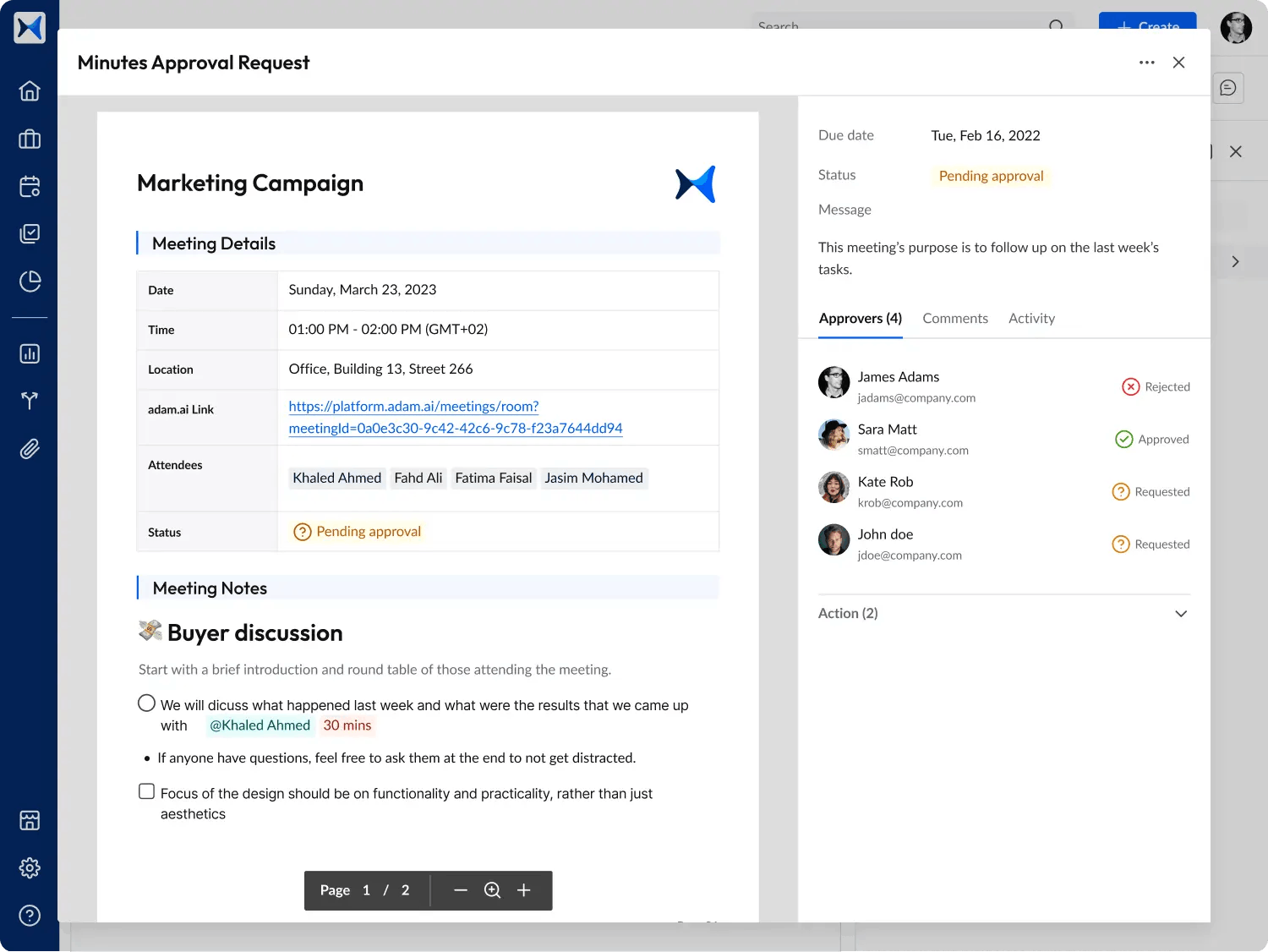
- Multi-project space management: Dedicated spaces for each project prevent overlap and keep discussions focused, making it easy for managers to track progress and maintain alignment with each project’s unique goals.
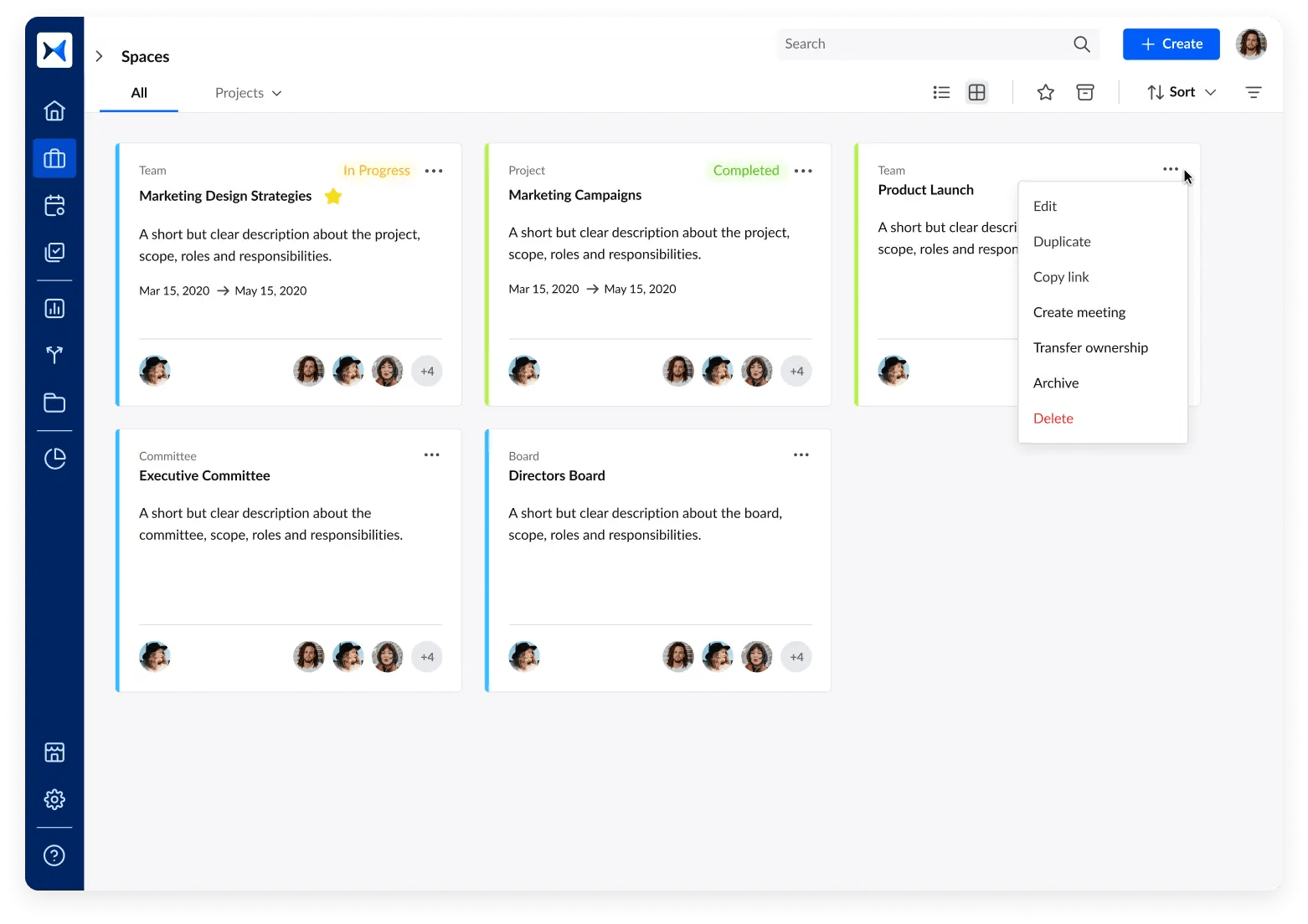
- Analytics dashboard: adam.ai’s analytics provide insights into meeting effectiveness and team engagement, helping project managers continuously optimize communication strategies and improve alignment across projects.
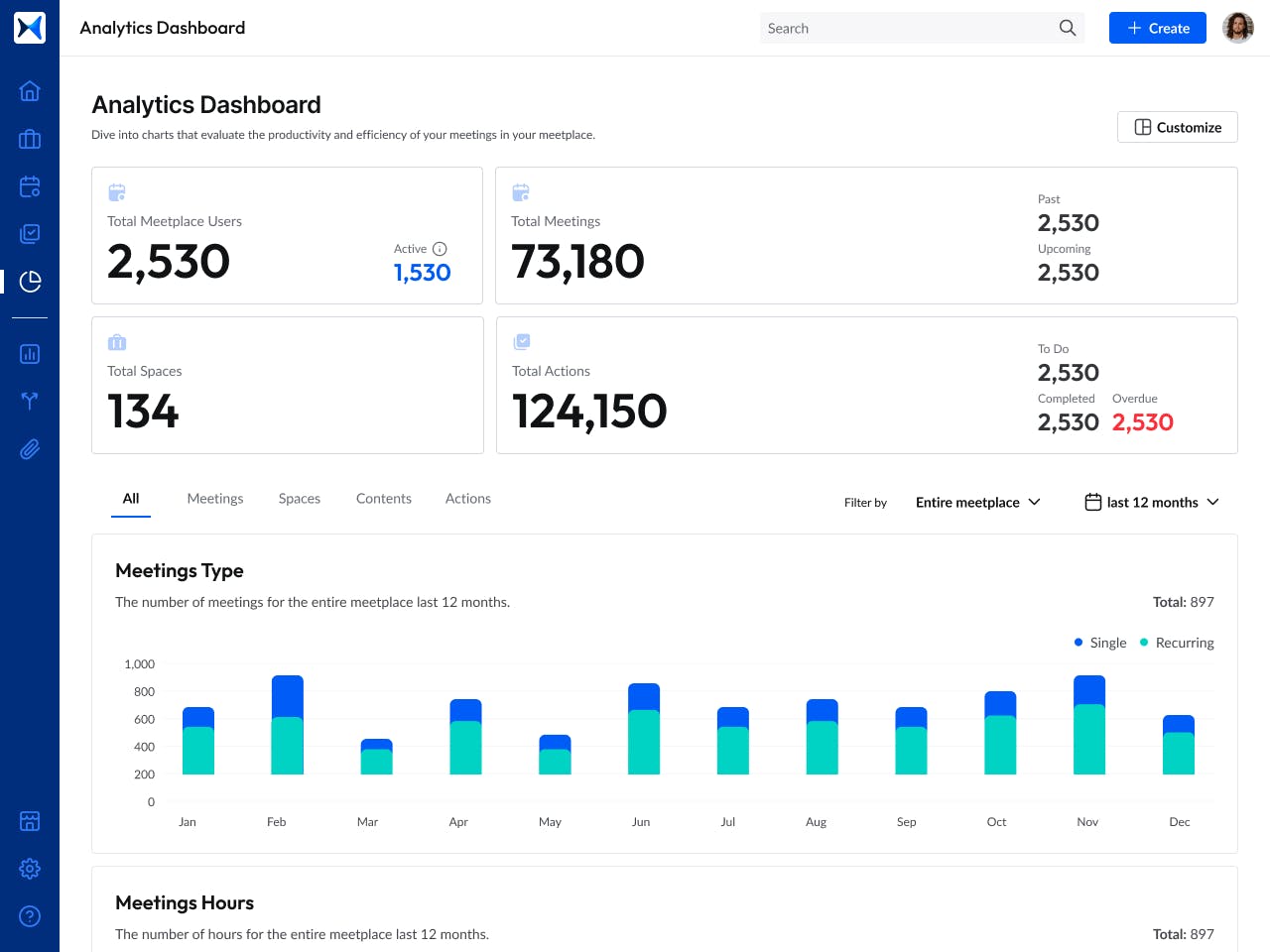
Transform how you conduct critical meetings—From meticulous preparation to effective execution and insightful follow-up, adam.ai integrates comprehensive analytics, full customization, and intuitive interfaces with powerful meeting management tools.
Easy onboarding. Enterprise-grade security. 24/7 dedicated support.
The bottom line
Effective meeting management keeps teams aligned, stakeholders informed, and projects moving forward smoothly. To achieve this level of efficiency, project managers should leverage modern tools that streamline communication and foster collaboration, making it easier to keep projects on track and aligned with goals.
And while there may be multiple solutions available, here is why adam.ai is the meeting management software platform you can trust:
- adam.ai is one of Atlassian Ventures' portfolio companies.
- In the meeting management software category on G2, adam.ai has been ranked a leader and a high performer for successive quarters in the past years.
- adam.ai has been included in the Forrester Report in the AI-enabled meeting technology landscape.
- adam.ai is trusted and used by powerful teams and organizations worldwide for all types of critical meetings, like board, committee, project management, and business development meetings.
- And most importantly, adam.ai integrates with your existing workflow, is SOC2 compliant, provides dedicated support and success, and has a free trial option.
Subscribe to adam.ai blog
Stay ahead with the latest insights—get our newest blog posts, tips, and updates sent straight to your inbox.